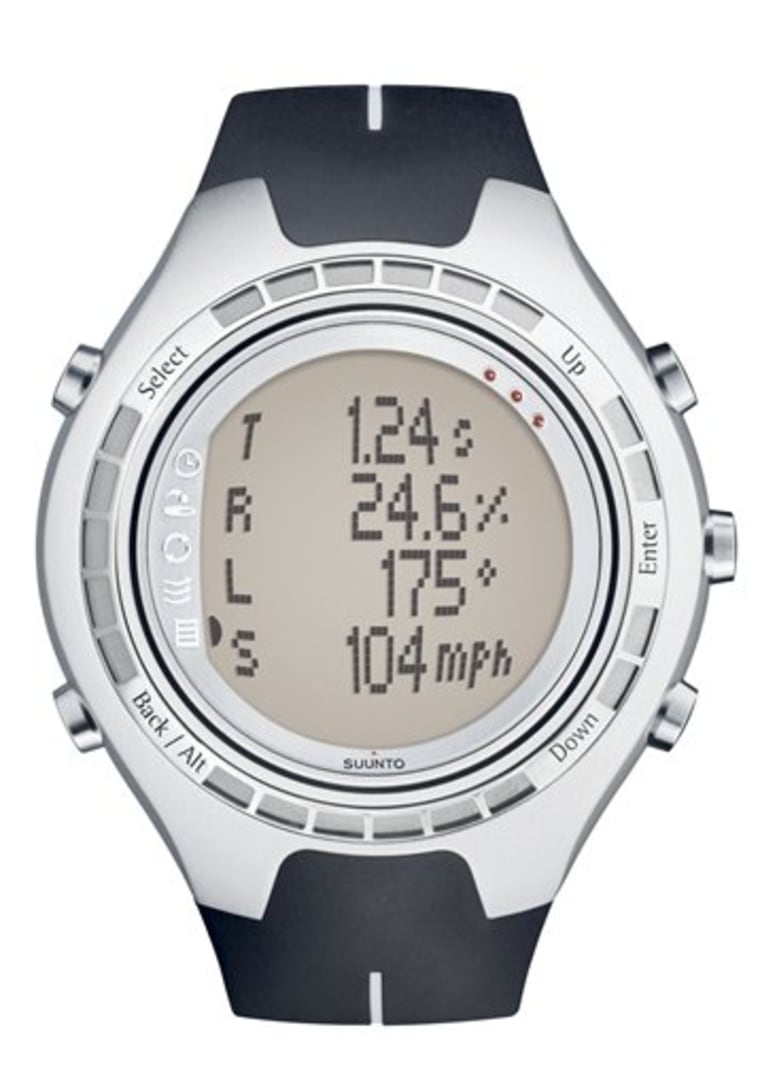One of the latest sports watches from the Finnish company Suunto looks to remove a few variables from your golf game, or at least limit variables to things you can control.
While many golf electronics can keep score and estimate the distance to the pin, the Suunto G6 ($399) goes a step further by measuring the speed, tempo and rhythm of your swing.
This is vital information when you're trying to hit the ball in the general direction of the hole, ostensibly the goal of golf. Now that I've tried out the G6, I have all the data I need to explain why I rarely break 90.
The silver-faced, black leather-strapped watch is easy on the eyes, though I felt it was bulky. I don't normally wear a watch at all when I play, so it felt weird at first. It wasn't so bad after a few early holes out on the course, however.
I choose traditional stroke play scoring over the match play and Stableford options, but it was nice to know the others were available.
Before heading to the course, I went online and downloaded its scorecard yardage and pars and then transferred that information into the watch using the Golf Manager software it comes with. That was a 15-minute task from beginning to end.
I began my golf day with a bogey on a 554-yard par 5, not a bad start for someone of my humble talents. I recorded that score into my watch and trudged on. A double-bogey on No. 2, another double on No. 3 and so on. I faithfully recorded each hole's performance by depressing shiny silver buttons along the side of the watch. I recorded greens in regulation (4), putts per hole (averaged 2.06), everything except the total candy bar count.
When I got home I connected the watch to my laptop with the provided USB cable. The end that clips to the watch had three metal contacts to draw my data from it into the PC, a task that only took a few seconds. Then, in the "contents" pane of the Golf Manager application, my round of golf — all 95 strokes, including one lonely birdie — popped up.
This was a lot better than simple scoring stats. The watch recorded all of my swing tempo deviations and something called BSL, or backswing length.
The tempo deviation measured the duration of my swing, from club takeaway to ball contact. I averaged 1.25 seconds for all of my woods and irons, which is fairly smooth but I got a little quick when I was trying to chop out of the tall grass.
On the software chart, my good shots were represented by green squares and bad shots by red. The BSL turned out to be the important statistic for me to monitor and work on, as I would later find out.
At the driving range, my backswing length averaged 137 degrees on my good shots and 135 degrees on my bad ones. The key was that my average swing speed on those bad shots was two miles per hour slower than on the good shots.
The moral? When I get tired, I get bad. When I'm out of energy, I'm out of straight shots. I always had a feeling this was true, but the Suunto G6 confirmed it.
Thanks, I think.
A teaching pro could analyze your swing as well as the Suunto G6 in about 10 shots at the range and two holes on the course. You also could have your swing analyzed electronically at a pro shop.
But there's something nice about the faceless feedback of Suunto's golf watch. It doesn't smirk or roll its eyes. It doesn't sigh when you're hungry and you shank a drive into the parking lot — into your own car door.
It just tells you why. Which is all you can hope for in a sport that can't be conquered.
